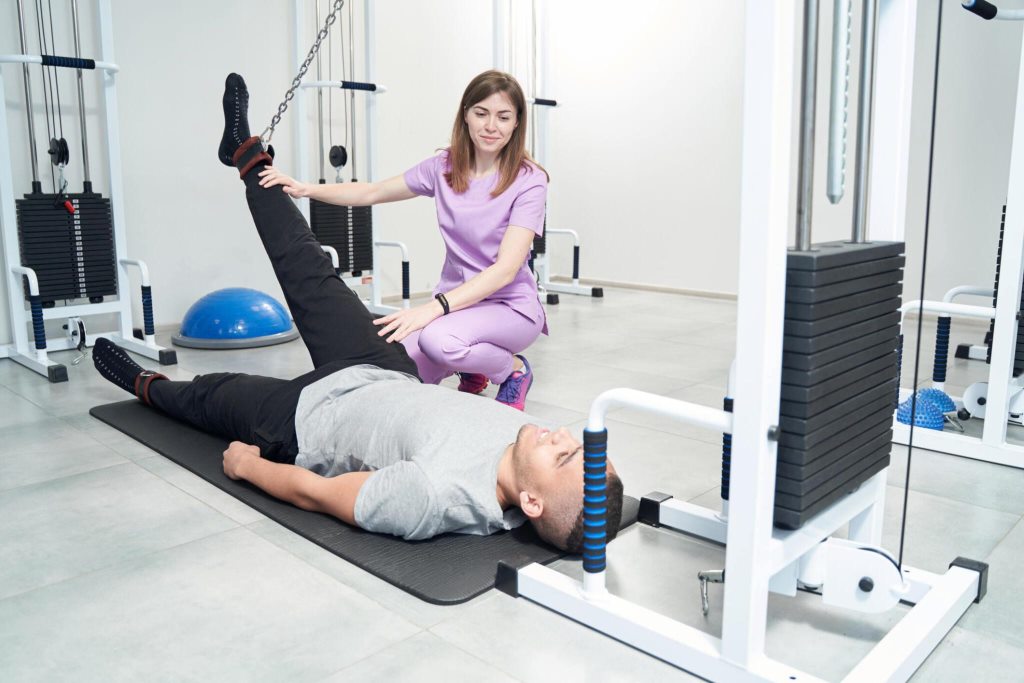Injuries are an inherent risk in sports and athletic activities, posing significant challenges to athlete well-being, performance, and career longevity. Pain management programs play a crucial role in injury prevention by addressing pain, inflammation, and musculoskeletal dysfunction.
In this comprehensive exploration, we’ll delve into the role of pain management programs in athlete well-being, examine the principles and strategies of injury prevention, and provide practical insights on how these programs contribute to optimal performance and longevity in sports.
Understanding the Impact of Pain on Athlete Performance
Before discussing the role of pain management programs in injury prevention, it’s essential to understand the impact of pain on athlete performance. If you are looking for an online pain management program, you can contact a reputable medical institute.
1. Impaired Functioning
Pain can impair physical functioning, mobility, and athletic performance by limiting range of motion, muscle strength, and joint stability. Athletes experiencing pain may struggle to perform basic movements, execute technical skills, or maintain proper biomechanics.
2. Decreased Endurance
Pain can decrease endurance and stamina by increasing fatigue, reducing energy levels, and disrupting sleep patterns. Athletes in pain may experience decreased motivation, concentration, and mental toughness, leading to diminished focus, decision-making, and overall performance during training sessions and competitive events.
3. Risk of Injury
Pain increases the risk of acute injuries and overuse injuries by altering movement patterns, biomechanics, and neuromuscular control. Athletes compensating for pain may develop faulty movement patterns, muscle imbalances, and asymmetries that can sideline them from training and competition.
4. Psychological Impact
Pain can have a significant psychological impact on athletes, leading to anxiety, depression, frustration, and decreased self-confidence. Athletes may experience fear of reinjury, performance anxiety, and negative self-talk, hindering their ability to cope with pain.

Principles of Injury Prevention
Injury prevention is a multifaceted approach that involves identifying risk factors, implementing preventive measures, and promoting safe practices to reduce the incidence and severity of injuries in athletes. Here are some key principles of injury prevention:
1. Pre-participation Screening
Conduct pre-participation health screening assessments to identify individual risk factors, medical conditions, previous injuries, and biomechanical imbalances that may predispose athletes to injury.
2. Proper Warm-Up and Cool-Down
Emphasize the importance of proper warm-up and cool-down routines to prepare the body for physical activity, prevent muscle stiffness and soreness, and promote recovery after exercise. Incorporate dynamic stretching, mobility drills, and neuromuscular activation exercises into pre- and post-workout routines.
3. Progressive Training Loads
Gradually increase training loads, volume, and intensity over time to allow athletes to adapt to the demands of their sport and minimize the risk of overuse injuries. Use periodization principles, individualized training plans, and objective monitoring tools to track workload, fatigue, and performance metrics.
4. Technique Correction and Skill Development
Focus on technique correction and skill development to improve movement quality, efficiency, and biomechanics, reducing the risk of injury associated with faulty movement patterns or poor technique.
5. Injury Recognition and Management
Educate athletes, coaches, and sports medicine staff about the signs and symptoms of common sports injuries, including sprains, strains, fractures, and concussions, and implement protocols for timely recognition and appropriate management of injuries.
The Role of Pain Management Programs in Injury Prevention
Pain management programs play a crucial role in injury prevention by addressing pain, inflammation, and musculoskeletal dysfunction, reducing the risk of acute injuries and chronic conditions that can compromise athlete well-being and performance. Here’s how pain management programs contribute to injury prevention:
1. Multimodal Treatment Approaches
Pain management programs employ multimodal treatment approaches to address pain from multiple perspectives, incorporating pharmacological, non-pharmacological, and integrative therapies to manage pain and improve functional outcomes.
2. Pain Assessment and Diagnosis
Pain management programs conduct comprehensive pain assessments to identify the underlying causes of pain, determine the severity and location of symptoms, and differentiate between acute and chronic pain conditions.

3. Individualized Rehabilitation Programs
Rehabilitation programs may include therapeutic exercise, corrective movement patterns, and neuromuscular retraining. Sport-specific conditioning drills are designed to strengthen weak muscles, improve joint stability, and enhance proprioception and coordination, reducing the risk of injury during athletic activities.
4. Psychosocial Support and Education
Mental health professionals offer cognitive-behavioral therapy, stress management techniques, and mindfulness-based interventions to help athletes develop coping skills, manage performance anxiety, and build emotional resilience.
5. Long-Term Health Monitoring
Pain management programs provide long-term health monitoring and follow-up care to athletes, tracking their progress, monitoring for signs of pain recurrence or injury relapse, and adjusting treatment plans as needed to maintain optimal health and performance over time.
Practical Insights for Implementing Pain Management Programs
Here are some practical insights for implementing pain management programs in athlete well-being:
1. Establish Collaborative Care Teams
Establish collaborative care teams consisting of physicians, physical therapists, athletic trainers, strength and conditioning coaches, and mental health professionals to provide comprehensive pain management and injury prevention services to athletes.
2. Implement Prehabilitation Programs
Implement rehabilitation programs that focus on proactive injury prevention strategies, such as dynamic warm-up routines, and movement preparation drills. Neuromuscular training exercises designed to optimize biomechanics, reduce injury risk, and enhance athletic performance.
3. Foster a Culture of Safety and Support
Foster a culture of safety and support within the athletic community by prioritizing athlete health, safety, and well-being above all else. Emphasize the importance of open communication, trust, and mutual respect among athletes, coaches, and healthcare providers.
4. Educate Athletes and Coaches
Educate athletes, coaches, and sports medicine staff about the importance of pain management, injury prevention, and performance optimization strategies through educational workshops, seminars, and informational materials.

Conclusion
Pain management programs play a critical role in athlete well-being by addressing pain, inflammation, and musculoskeletal dysfunction, reducing the risk of injuries, and enhancing performance and longevity in sports.
By adopting a multidisciplinary approach to care, integrating evidence-based strategies for injury prevention and performance optimization, and fostering a culture of safety and support within the athletic community. Pain management programs empower athletes to achieve their full potential.



